12 Ways Working from Home Can save You Money

Can working from home really save money? There are many financial benefits of working from home, aside from the money that companies save when employees work remotely.
This article may contain affiliate links. We earn a small commissions when you purchase via those links — and it's free for you. It's only us (Becca & Dan) working on this website, so we value your support! Read our privacy policy and learn more about us.
We’ve talked about the benefits of working from home before on our website.
It’s a topic we really believe in, and when we think of all the positive effects on life from working from home, it kind of seems like a no-brainer if you have a job you can do from a laptop.
Working from home adds a lot of value to your life because it saves you time, money stress and more. We wanted to dig a little deeper into how and why you can save money when you work from home.
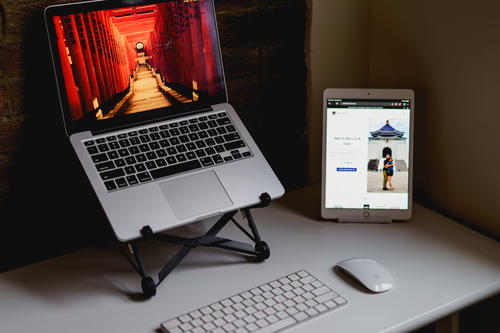
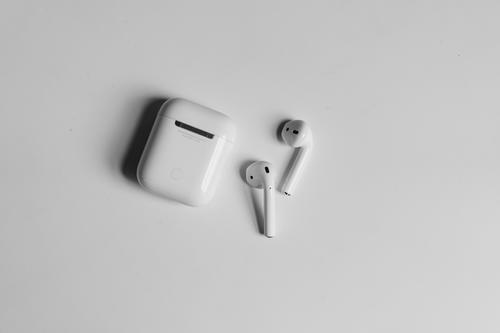
We’ve been working from home on and off for almost three years. These tips are some of our favorite ways that we’ve been saving money while we’ve been working remotely.
Commuting
Commuting will be one of the most obvious ways that you can save money when you work from home.
If you drive to work, you’ll save on gas, car maintenance and wear and tear to your car. You might even be able to sell your car if you live in a city with ample options for mass transportation.
If you live in a city, and you work from home (like we do!) you won’t need to pay for a monthly metro pass. In New York City, an unlimited NYC MetroCard costs about $130/month. This is money that we’re each saving every month by not having to pay for one, because we currently don’t have a commute!


We do still take the subway to go places, but we don’t need to take the train or metro every day. Plus, if we’re not going very far, we can consider walking, to save the fare of the subway ride. Looking for ways to work toward saving every month has also got us running and biking to run errands or go farther.
Even if you’re working from home for some days of the week, you’ll be able to get all of the same commuter benefits by not needing an expensive monthly pass. These days, companies are also slashing these types of benefits if they’ve recently transitioned to becoming remote-first.
Fun fact about me: In 2013, I moved to New York City and I sold my car. I had been living outside of Philadelphia and I had been driving to an office every day.
In my life without a car (and moving to the biggest city in the US — it’s quite a shift), I eliminated my car payment, stopped needing insurance and obviously didn’t need any car repairs. When I moved, I estimated that I saved more than $500 per month by getting rid of my car. Plus, I was able to walk to work based on the first apartment I lived in and its proximity to my company’s headquarter office in downtown Manhattan.

Clothes
Minimalism is something that we practice: it’s been a style that we’ve taken to when we travel, even practicing travel minimalism tips and tricks.
At home, we often audit our existing clothes and see what fits and then decide what we still like. We try not to hold onto clothes that we might fit into later. We also try not to hold onto anything that’s out of style or been out of use for a while.
We see everything we own as serving a function. We try to sell as much as we can, in a healthy continual way, and give away what we no longer need, to charity.
When we were both going into our offices every day, we would sometimes meet at H&M at the end of a work day, simply as a meeting spot.
Because we’d meet there, we’d wind up buying a new shirt or a pair of shoes.
We would constantly walk by people on the street in New York City and feel inspired to try new clothes to imitate new looks, or we’d feel like we needed the latest trends. We were hooked on the retail bug like most Americans.

We realized that we would compare ourselves to others at our office and want to subtly impress them with new, trendy well-fitting clothes. For us, we were both working in offices with casual dress codes.
For me especially, it was okay to wear T-shirts to work. I was lucky to be in a casual environment and was fortunate that I only needed one set of clothes, and not ‘work clothes’ and ‘non-work clothes’ like Becca did. She rarely wore the same set of clothes to work that she wore on weekends. This creates excess (and Becca approves this message).
Because we traveled long term while working remotely, we were used to only wearing and packing what we needed. I also wore the same pair of paints almost every day for a year.
When I met a new person in a cafe or at a coworking space, they’d have no idea that I only owned one pair of pants. Try it — you’ll see that this is a great way to save space in your closet.
If you’re looking for a great pair of pants, check out my guide for the best travel pants, which I’ve rated on function, wearability, versatility and comfort.
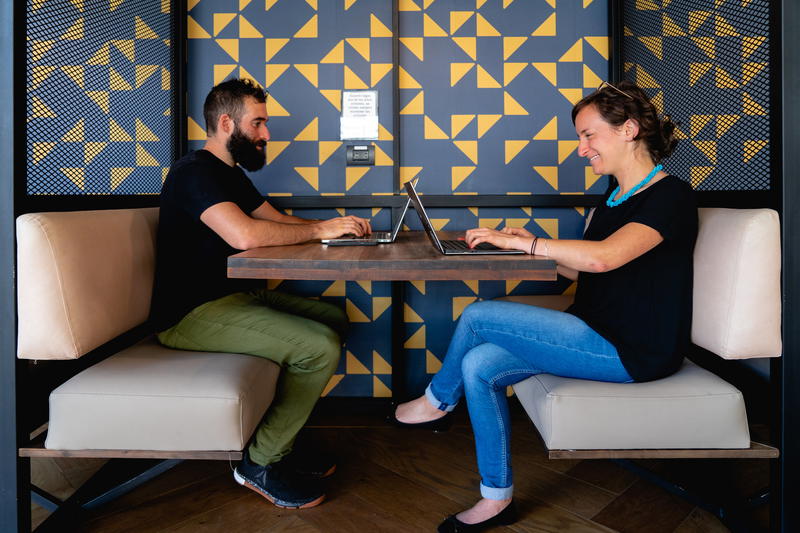
When I saw people traveling long-term with huge suitcases or with heaps of different outfits and accessories, I didn’t want any of it, because it meant that I would have needed to carry it. And, it meant that I would have needed to pay for it.
Now, back to present day: limiting the amount of clothes that we buy means we get to save money and save clutter from our dressers and closets.
Are you on a mission to declutter? Here’s the story of how we decluttered our small apartment where our home offices are.
We realized that people couldn’t really tell the difference if we wore the same clothes, often. We got over the need and desire to replace our clothes because we felt like we had to.
I estimate that I save about $50-100 per month by not buying new clothes. I only buy things like running shoes (see our home fitness guide for when you work from home) or things to fit me when I change size.
Food costs
When I was going to an office regularly, I would often pick up lunch or a snack on the way home. In fact, when I started working from home, I lost 20 pounds because I cut out everything that had been an “on the way” item.
When I worked at my office, it was really easy to grab lunch with coworkers or put in a group order for lunch delivery. It was also easy to eat more than 1000 calories during lunch and feel horrible that I overate and just spent too much money on the price of eating out in Manhattan.
I’ve seen coworkers order a $15 salad every day for a week. That’s $75 a week or $300 a month! Just on SALAD.
Don’t get me wrong, I actually really love salads. We talk all about healthy eating in our tips for eating healthy when you work from home.
Since we started working from home, we’ve been really focused on getting healthy food that makes us feel good. Did you know that this is one of our favorite remote work trends this year?
We even have additional tips on how to stay healthy while you are working from home. We’ll stock up on plenty of fresh fruits and vegetables.
We also like getting frozen veggies, as they can stand in for items when we run out of the fresh stuff. We eat tons of frozen fruit. It stays good for so long. Most of the time, it reminds us of ice cream, minus all the added sugar and fat, of course.
A normal day of eating looks something like this for me:
What I eat for breakfast
Oatmeal with peanut butter, hemp seeds, frozen blueberries and a banana. I estimate that the weekly cost for this breakfast is about $10.
Sometimes I’ll have two pieces of toast with peanut butter and a banana. The cost for this breakfast is similar to the first, about $10 for a week’s worth of food.
What I eat for lunch
My lunch varies, based on what my breakfast is. If I’ve had a lot of carbs, I’ll try and stick to a salad.I try to get a lot of vegetables in for lunch, in case I don’t get as many during dinner (which I cook).
A typical lunch may be a Greek salad with cucumbers, feta cheese, cherry tomatoes, avocado, some chickpeas and some various nuts and seeds. I’ll only buy avocados if they are $1 at our local supermarket (paying more than this for avocados is difficult to bear, after living in Colombia, where they’re so inexpensive!).
This lunch can start to add up, especially if I increase the amount of vegetables. I’ll be conservative and estimate that my lunch food costs about $20 for the week.
What I snack on
Throughout the day, I’ll typically snack on some carrots and celery. I try and not consume anything too dense. If I am really hungry, I’ll sometimes grab another banana with some peanut butter.
What I eat for dinner
Becca and I almost always eat dinner together. We’ll usually try and make something roasted, like potatoes, something with eggs, either scrambled or fried and another fresh vegetable. We usually add a grain like rice or quinoa, which we now cook with our homemade vegetable stock (we make it from vegetable scraps that we keep in the freezer, and we learned it as a trick from YouTube food vloggers).
If the season is right, we’ll get a lot of lettuce, spinach or arugula and make salads.
After dinner, I’ll reach for something sweet, like frozen blueberries and frozen mango.
Dinner usually adds up to about $15-$20 per week.
Total food costs for the week
We usually spend about $80-$100 per week for the both of us. With my estimates added up, I account for about half of that, for around $40-$50 of food per week.
Now, if I would go to an office every day, and eat lunch a few times per week, that would easily go over my weekly food budget.
By working from home and cooking all of my meals and limiting the amount of times that we order in, we can easily save a few hundred dollars per month, if not more. This has been incredible for our health and for our savings.
If you are looking for a place to keep your savings, check out Wealthfront. It’s what we use and the APY is too good to pass up. Check it out!

Tax breaks
We’re not going to do a deep dive into this category, as we’re not accountants; however, we do know the benefits that some people can have by writing off a portion of their home office for a tax break.
Depending on your work status, if you’re full-time, or working as a freelancer, you may be able to “write off” components of your professional costs like your phone bill, Internet service and other office expenses like that.
When I was working remotely and traveling, I was able to write off my coworking space, my laptop, my cell phone bill and even some of my travel, as that was critical to my work.
Our advice: Make sure you speak with your accountant regarding writing off your expenses when you work from home. Consider all the office items you’ve purchased for a home office in making these decisions.
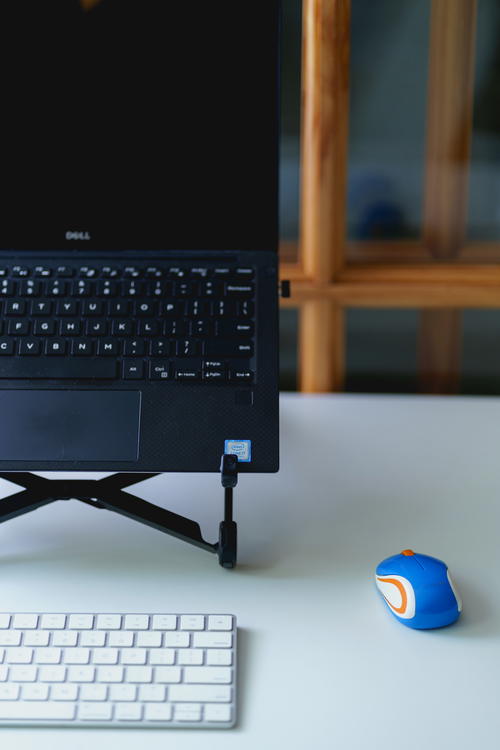
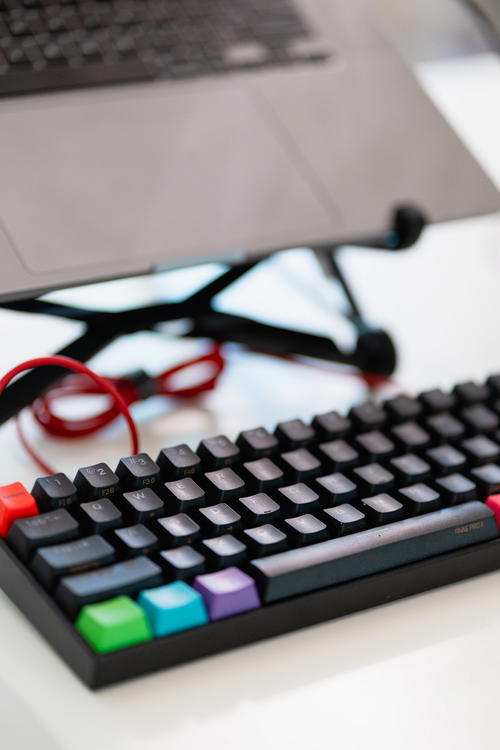
Childcare
Childcare can really be a huge expense if you are part of a family that has small children. If both parents work, paying for childcare is an important part of life.
Lots of people have had to make adjustments recently in order to look after their children or help them learn from home.
Given, this is not something that we have experience with; rather, we know people who have formed small groups to help keep their kids occupied and/or learning, while they work from home.
Or in some cases, parents’ work schedules have been adjusted in order for one parent to look after their children as the other parent is working. Sometimes, if grandparents are close and are in a position to do so, they can help with childcare as well.
Either way, not paying for professional childcare like a live-in nanny or a daycare center, whether it is within our control or not, is a way to save money.
Gym costs
With my old office schedule, I would leave the office promptly at 6pm so that I could make it to my gym by 7pm.
I would work out from 7pm - 8pm and then head home. By the time I got home, it was usually 8:30pm. I would make dinner, try and relax and then go to bed around 11pm. I would do this Monday through Thursday, week after week.
There was very little time for me to do anything after work, except for those activities.
Recently, gyms have been closed and I have not missed them at all. I’ve invested a little bit in home exercise equipment and have been running outside and getting plenty of steps, as part of the best ways to stay fit when working from home.
We have invested in home gym equipment like resistance bands, an attractive yoga mat by YOGO to have permanently in our living room and a kettlebell for strength training workouts at home.
My gyms were expensive! I’m embarrassed to say so, but I belonged to two different gyms. One gym was $200 per month and the other was $70 per month. Both of these rates are even ‘pretty good deals’ for NYC.
The more expensive gym was CrossFit and I enjoyed going for certain group workouts and the community around there. The second gym was closer to our apartment, and I would go there later at night to do longer cardio if the weather was not good and I didn’t want to walk farther to CrossFit. The $70-per-month gym also had a sauna! I would go there to stretch often.
By exercising at home, I personally save $270 per month. Most people can probably look to save about $70 per month, depending on what you had previously invested in. Depending on where you live, this may be more or less.
For Becca, she had already figured out that during the winter she could save those treks outside to the subway and to a yoga studio by doing yoga online via YouTube, for free! See some of her recommendations in our remote work fitness tips guide.
We’ve both been running and biking a lot more — TONS more — since working from home and cutting the commute out of our lives. We’ve had more energy and gotten more sleep. For this, we can thank all those benefits of working from home, and you may be feeling the same way.
Cell phone data costs
My cell phone bill is part of a family plan. My family (parents and siblings — we’re all “grown up” now) has a bucket of data that we can all use.
When I was traveling, I had my own cell phone plan for which I would pay for my data usage. It’s called Google Fi, and you can see more about it in our list of must-have apps and services for long-term international travel.
I was really careful to only use the data that I would need, like for Google Maps and otherwise. This meant cutting out data-sucking social media services like Instagram, Twitter and YouTube. Use these only when you’re on WiFi!
When I was commuting, I would get so bored and sometimes browse social media. I would stream a playlist or an audio book. Over time, these data costs did add up. By eliminating my commute all together, I don’t need to think about paying these additional data costs for the entertainment I’d consume when I was out of the house.
This isn’t a huge deal for people who are on unlimited cell phone plans. I can see people being able to save about $20 per month on data by not spending any extra fees on data usage through a commute.

Coffee
It’s no joke that coffee adds up fast when you buy a coffee at a cafe every day.
Don’t get us wrong — we love cafes and coffee shops, especially for working remotely and checking out the different ways coffee is brewed around the world.
In fact, you can count on us for reviewing coffee shops in Mexico City, Taipei and Brooklyn.

But stopping for a coffee, whether it costs $1 (coffee cart in NYC) or $7 (insane fancy latte in San Francisco) will add up week by week, month by month and certainly, year by year.
It’s no joke that there’s a book called the Latte Factor. I bought it, and Becca’s currently reading it. While the crux of the book is not about coffee (it’s about how to be smart about saving money and that anyone can do it), the fact is that a $3 coffee each of five days a week, 20 days a month and 50 weeks of the year adds up to… $3000.
We hadn’t run those numbers before!
That’s not to say you should never drink coffee or go crazy saving your money or never treat yourself — we’re not saying any of that. We’re saying that because you head out to work at an office, you pass by a coffee shop, and you buy coffee because you’re heading to work on a commute.


What we are saying is that you can learn to brew really good coffee by getting some training and then learn to be your own barista. It can become part of your schedule when you work from home. You might even look forward to it.
In our guide to setting up a home office, we recommend our favorite coffee makers like a Chemex and French Press.
These one-time investments can help you form new habits and even ‘wow’ your friends with your new-found barista skills you picked up on YouTube. Plus, you’ll save $3000 a year by working from home.
Haircuts
There are a few ways to consider haircuts as how working from home can save you money. Plainly speaking, your coworkers will no longer notice when you haven’t had a fresh haircut or have some dead ends, because you’ll be on Zoom. That’s a fact.
Second, if you live with someone you trust, start learning how to cut hair (this can also be learned on YouTube) and invest in what we invested in:
- Becca’s professional haircutting shears, which are great for cleaning up and trimming
- Dan’s WAHL men’s haircutting buzzer, which works great as a general haircutting tool for men
What we both are saying is that we used to frequent hairdressers near our offices, and only because they were near our offices. We essentially let our offices determine our hairdressers, and why should your office determine where you get your hair cut?
Dog-walkers
In NYC (where we live) and in suburbs as well, it’s common to pay for a dog walker to walk your dog when you and your partner or spouse go off to work.
If you choose not to hire a dog walker to come every day, you might choose to pay for doggy day care. Either way, the costs start adding up when you start paying for services to let your dog out while you’re out for 10 hours at the office.


Now, picture this: you’re home all day, working, and you choose to work dog walking into your own work-from-home schedule. The saved money starts adding up. You get time with your furry friend back into your day. If you work from home as a couple, you and your spouse can start taking lunch breaks to walk the dog(s) together. This sounds GREAT!
While working from home can be distracting, the fact that you’re not out for most waking hours of the day can eliminate the need for excessive services, and that’s where your money gets put away more easily.
Alcohol & bars
There are two ways that alcohol was a part of our spending when we’d commute to offices in Manhattan:
- As part of ‘decompressing after work’ and hitting some bars with coworkers when the day was done
- Meeting up with other friends who worked in the area for happy hour or drinks
Both of the above are fun — no doubt about it! But both of these cost money — lots of it — when you’re going out to bars as a hobby, a way to socialize and a way to stay sane.
Lucky for us, we could — on one hand — say we ‘outgrew’ the activity of going out to bars proactively and regularly since we’ve been working from home, as it coincided with a change in lifestyle.
On the other hand, we could also say that we prefer to be home with a bottle of wine or making a fun cocktail, and, if needed, connect with friends and contacts virtually after the work-day so that no one has to sit in traffic or spend time in transit.
(Of course, we do love hanging out with our friends in person, but during warm months, it has also been awesome to take walks, picnic in the parks and more).
The fact that we don’t pass by bars or use bars as a midpoint between two arbitrary office locations to see other people in our lives is something we are not mad about at all.
Time
We won’t be the first to say this: time is money. What not enough people are saying is that time is happiness, and happiness is work-life balance when you work from home.
Working from home saves you money because it saves you time — time spent in line waiting for the elevator at the office, time spent looking for parking so that you can get on the train, time spent shopping for work clothes and time spent commuting on a bus.
One of our favorite overall benefits of working remotely is that you gain that time back in your day to do hobbies you love.
Among these could be time focused on staying fit, working on eating healthy, reading with your kids or working on your blossoming side hustle — all some of the most forward-thinking work trends available to us right now.
Are you transitioning back to an office? Don’t miss our guide to transitioning back to an office after working from home.
Childcare
While this one is a bit complicated, we do have friends who essentially did away with the need for paying for childcare because they were both working from home. They alternated hours of work and being on “baby duty,” and made it work for a year of their first child’s life.
While this surely won’t work for everyone because jobs have all sorts of demands, you can still check out my guide to how to work from home with a baby where I discuss it more in detail.

